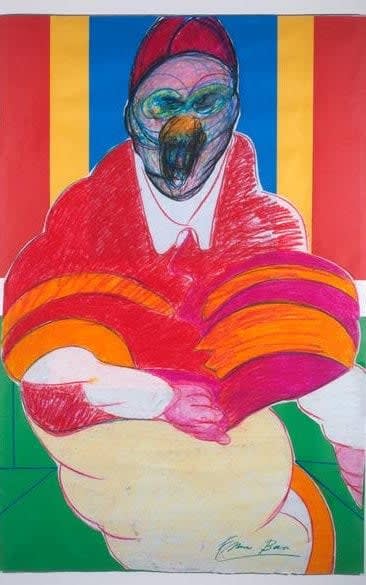The authenticity of the Ravarino drawings has been frequently contested, and they are not to be included in the official Francis Bacon catalogue raisonné (catalogue of complete works) to be published by his estate this summer. Yet in this exhibition they are presented as authentic, fully catalogued works, and priced from £50,000 to £785,000 each.
As any market professional will tell you, for any painting or drawing purporting to be by an important modern artist to have any significant value, it should normally be listed in a catalogue raisonné, have a certificate of authenticity from the artist’s estate, or at least be recognised by authorised experts. Without these, they are virtually worthless. Neither Sotheby’s nor Christie’s has ever accepted any of the Ravarino Bacons for sale. But could they still have some kind of speculative value?
Herrick does not believe that their exclusion from the catalogue raisonné means they are fakes. “The estate may have rejected them,” she argues, “but they haven’t said they are fakes.” She points to a long list of supporters, mostly Italian critics, and including the British art historian Edward Lucie-Smith, who has described the drawings as “complete works” by Bacon, as opposed to studies, and to an exhibition history in which sections of the collection have been shown around the world, from Venice to Buenos Aires (curated by Lucie-Smith) and even to China.
